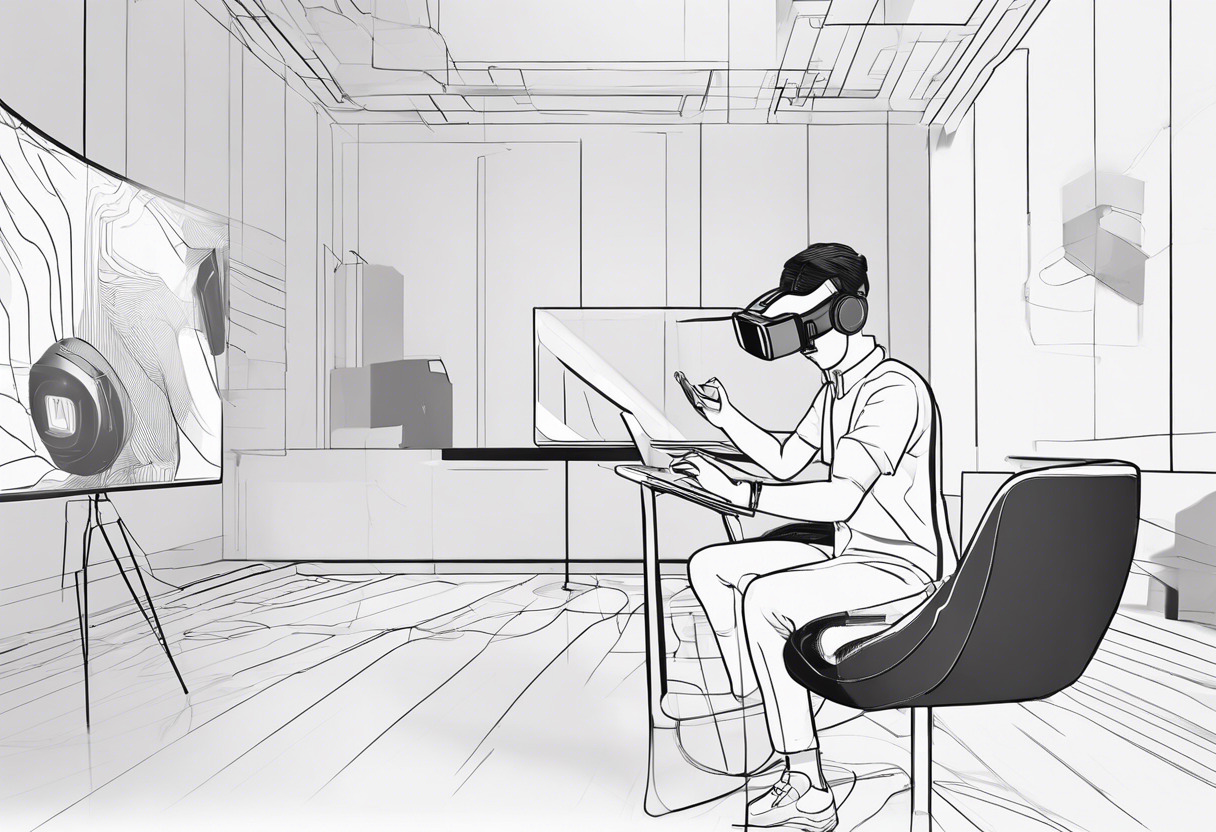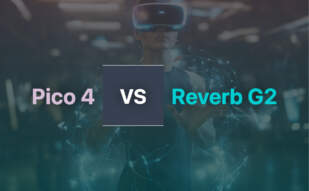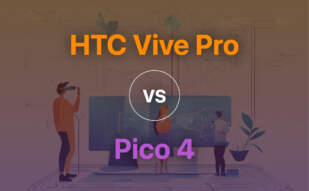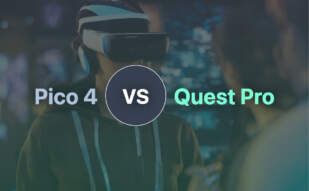For professionals needing high-resolution VR with computer-tethered performance, HP Reverb G2 wins with its superior pixel density and expanded VR software access. However, for those seeking a lightweight, ergonomically sound headset with built-in controllers, notable visual quality and seamless comfort, the competitively priced Pico 4 is a worthy contender.

Key Differences Between HP Reverb G2 and Pico 4
- Resolution: HP Reverb G2 showcases 2,160 by 2,160 pixels per eye with LCDs, surpassing Pico 4’s over 2K resolution per eye.
- Comfort & Design: Pico 4’s balanced, ergonomic design reduces frontal weight by 26.2% making it more comfortable for extended use than HP Reverb G2.
- Controllers: HP Reverb G2’s improved motion controllers lack finger-tracking capabilities. Pico 4’s haptic motion controllers yield realistic tactile feedback.
- External Compatibility: HP Reverb G2 connects to DisplayPort and USB-C, requiring Windows 10. Pico 4 operates on PICO OS 5.0 and does not specify additional compatibility requirements.
- Tracking: HP Reverb G2 uses an improved four-camera setup for motion tracking. In contrast, Pico 4 uses a SLAM omnidirectional positioning system.
- Field of View: Pico 4 has a 105° FOV, while HP Reverb G2’s FOV isn’t mentioned but could be smaller due to usual high-resolution VR Headsets.
- Pricing: Pico 4 is less expensive at €429, compared to HP Reverb G2’s $599 price point.
| Comparison | HP Reverb G2 | Pico 4 VR |
|---|---|---|
| Price | $599 | €429 |
| Design | Four camera setup, comfort improvements, no external sensors required. | Small, ergonomic, evenly distributes weight for comfort. |
| Resolution | 2,160×2,160px per eye | Over 2K resolution per eye |
| Refresh Rate | 90Hz | Undefined |
| Compatibility | SteamVR, Windows Mixed Reality | PICO OS 5.0 |
| Processor Requirement | Intel Core i5, AMD Ryzen 5 or equivalent | Snapdragon XR2 |
| RAM Requirement | Undefined | 8GB LPDDR4 RAM (Enterprise Version – LPDDR5) |
| Positioning System | Camera-based | SLAM omnidirectional |
| Comfort | Memory foam facemask. Glasses-friendly padding system. | Reduced frontal weight and thickness. Automatic interpupillary distance adjustment. |
| Controllers | Two motion controllers, no finger-tracking. | Haptic motion controllers with realistic feedback. |
| Sound System | Two speaker drivers on headband sides. | 360° Stereo speakers with 3D spatial sound. |
| VR Platforms | Windows Mixed Reality, SteamVR. | PICO OS 5.0 |
| Design Comfort | Camera module can impact due to size. | Weight evenly distributed for improved comfort. |
| Tracking Accuracy | Camera-based, occasional hiccups. | SLAM omnidirectional system. |
| Field of View | Undefined | 105° |
| Usage | Professional and consumer usage. | Undefined |
>
What Is HP Reverb G2 and Who’s It For?
HP Reverb G2 is a revamped high-resolution VR headset intended for both consumers and professionals. Sporting a four-camera setup, immersive audio, and a comfortable facemask, it is an appealing choice for those seeking a PC-based VR experience. HP Reverb G2 competes directly against Oculus Quest 2, HTC Vive Pro 2, and Valve Index. Primarily, it appeals to those using Windows-based systems and SteamVR platform.
Pros of HP Reverb G2
- Sharp imagery with 2,160 by 2,160 pixels per eye at 90Hz resolution
- Camera-based motion tracking
- Compatible with both SteamVR and Windows Mixed Reality platforms
Cons of HP Reverb G2
- Occasional tracking hiccups
- Lacks support for wireless charging
- Lower tracking accuracy due to lack of external sensors
What Is Pico 4 VR and Who’s It For?
Pico 4 VR is a compact VR headset designed by ByteDance, highlighting balanced design and immersive VR experience. It fashions ergonomics, high-resolution display, and advanced tracking capabilities targeting both consumers and businesses. The Pico 4’s unique selling proposition includes its lightweight design, high-resolution displays, and the Qualcomm Snapdragon XR2 platform that powers it. Primarily, it’s intended for VR enthusiasts seeking comfort and immersive experience.
Pros of Pico 4 VR
- Ergonomic and lightweight design
- High-resolution display with over 2K resolution per eye
- Uses Qualcomm Snapdragon XR2 platform
Cons of Pico 4 VR
- Smaller field of view due to Pancake lenses
- Limited game library
- Dependence on built-in hand tracking function
Determining Your VR Victor: HP Reverb G2 vs Pico 4
In the competitive landscape of VR hardware, the pivotal question lingers; HP Reverb G2 or Pico 4?
For Professional Usage
HP Reverb G2 outshines with its superior resolution, extensive software compatibility, and room-sized VR capabilities. A worthy tool for immersive design, simulation, or training. However, the ongoing improvements to Microsoft Windows Mixed Reality can be a possible drawback.

For Gaming Enthusiasts
Pico 4 offers a comfortable experience with decent resolution and tracking. Yet, it’s held back by the caveats of a limited game library, which certainly provokes thought for the gamers.

For Budget-Conscious Consumers
The price-conscious should veer towards the HP Reverb G2, solely due to their trade-in discount offer, reducing the burning hole in your pocket considerably.

For Comfort Seekers
The Pico 4 is king when it comes to ergonomics and weight distribution, ensuring prolonged comfortable usage. If comfort reigns supreme in your books, explore the Pico 4 universe.

The corporate titan, HP Reverb G2, is top-drawer owing to its high-resolution prowess and expansive VR platform. Conversely, the agile Pico 4 reinvents comfort in VR experience but loses to an inferior game repertoire. Align your choice with your cardinal needs.
Patrick Daugherty
Content writer @ Aircada. Merging AR expertise with a love for late-night gaming sessions.





